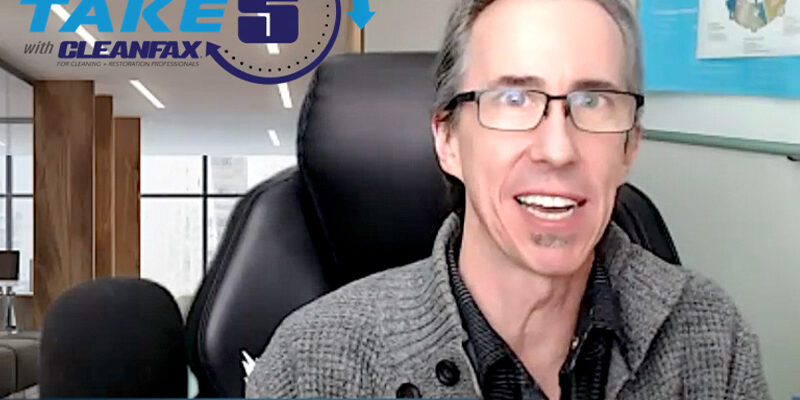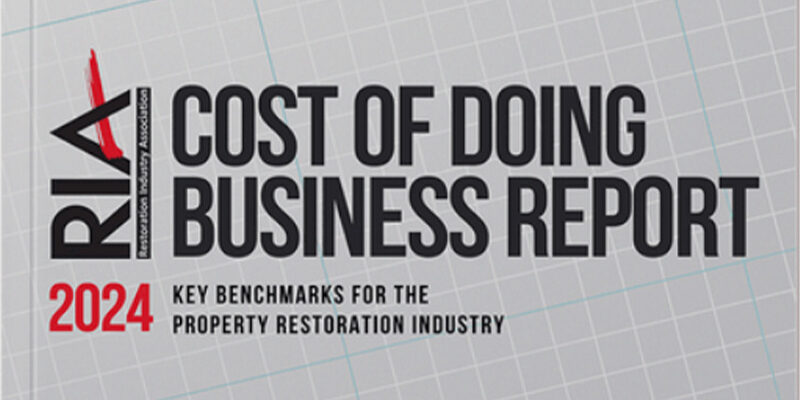Sales Systems

So far in this series, I’ve shared that in order to have a phenomenally successful cleaning and restoration business, you need to have goals, a business vision, a plan and phenomenal systems.
There are five systems required for any business.
- Marketing – Everything you do to attract prospects to your business.
- Sales – Everything you do to convert prospects into paying customers.
- Operations – Everything you do to serve your clients.
- Administration – Everything you do to track your numbers.
- Leadership – Everything you do to move your business forward.
Last month we covered marketing – attracting prospects. Have you ever attracted a prospect but didn’t close the sale? Did you attract the right kind of prospect? Or did you attract a price shopper? Before thinking about your sales systems, make sure you’re doing a good job in marketing by attracting potential lifetime clients rather than customers that may or may not do business with you, and that will be gone with a cheaper price tomorrow.
You can see the articles in this series on the Cleanfax/Howard Partridge resource page (click here).
This brings us to the next system, which is sales.
This story demonstrates the difference between marketing and sales: A few years ago, on a Saturday afternoon, my wife and I were in the market for our son’s first car. As I was browsing a local Honda dealer’s website, I noticed a contact form on the site. I put in my phone number and they called me in less than two minutes. I was impressed.
The young lady who called was very professional and courteous and invited me to come down to the dealership the same day. Once I arrived, they told me that the lady I spoke to over the phone was in the “internet” department and did not actually talk to the customers at the dealership. “Okay, fair enough,” I thought to myself.
At that point, the worst sales process you can imagine began. These folks had phenomenal marketing, but their sales systems needed help. I bought a brand new Honda, but not from them. Because their marketing didn’t work? No, because the salesperson wasn’t trained. You must train yourself in sales, and you must train your people. When you work hard to generate a prospect or client, don’t get lazy when it comes to sales and service.
Sales is everything you do to convert prospects into paying customers. Phenomenal sales converts the highest number of qualified prospects into customers. A phenomenal sales system is a group of working parts that duplicates results consistently.
My 7 Step Sales System
Many years ago, I developed sales systems that have proven to work in many small businesses around the world. When you understand and apply the systems, I believe you can close more sales because I have seen it work many times. Through this system, you will also confirm that you have the right type of prospect and you will disqualify the price shoppers (sounds nice doesn’t it?).
Step 1: Establish rapport
Find out how they were referred to you, what triggered their interest in the ad, and build rapport around that. For example, a couple of questions you might ask… “How did you hear about us?” If they were referred, follow with, “Great! What did so and so say about us?” You can then both build rapport around the person that referred them. If it was an ad, ask “
What was it about the ad that got your attention?” This step also helps you track your marketing results.
Step 2: Connect emotionally
You may have heard that people always buy based on emotion. They justify their purchase with logic, but the sale is really made on emotion. People only buy things because they have to or they want to. The emotion of “have to” is to avoid pain where the “want to” is to get gain. One is the emotion of fear of loss (buying insurance), the other is the emotion of desire (getting that new Lexus).
In this step, you want to connect with the emotion they probably have. Most likely, they are fearful of choosing a new company to invite to their home or business. Let them know you understand that, and share how you’ll help them avoid the pitfalls of choosing someone else, but do it briefly.
Step 3: Build credibility
Now it’s time to position your company as the company of choice, establish trust and believability, and help the prospect get their mind on the most important thing, which is not cleaning or restoration, but rather choosing the right company.
You’ll want to have a one to two minute presentation about your company that demonstrates, trust, experience and peace of mind.
Start this step by asking the question, “Would you mind if I take a moment and share a little about our company and how we are different than everyone else?” If you have a serious prospect, they will appreciate this step. Price shoppers don’t care, they just want a price.
Step 4: Perceived problems
The purpose of this step is to identify the prospect’s needs, truly understand their fears and desires, and define the “perceived” problem. Make sure to ask enough questions in this step to truly understand what they feel the problem is, not what you think it is.
Step 5: Outline solution
If you have done a good job identifying emotional needs and desires, you can now offer the right solution. But not too fast. You still don’t get to spew your features. Sorry! Instead, give feedback to what they have told you in the interview and confirm that they agree with the solution.
Here are some rules to follow in this step: Approach the sales process as a consultant. What do consultants do? They ask questions to determine where you are so they can give you recommendations on how to get where you want to go. A doctor asks about your symptoms so he can give a prescription. A prescription without a diagnosis is malpractice. It is no different for the sales consultant.
Be sure to focus on benefits rather than features. Features are what the product or service is. Benefits are what the product or service does for them. As you’re going through the solution, connect the solution to your company values that were mentioned in step three.
And most importantly, get them to agree that you have recommended the right solution, before moving to the next step.
Step 6. Share the investment
Did you notice I didn’t say, “Quote the price?” What’s the difference between a “price” and an “investment?” A price is something you’ve got to pay. An investment gets a return.
A fatal mistake that order takers make is not just quoting a price, but quoting it before the first five vital steps have taken place. Can you now see how the first five steps build the value of the unique experience you offer? You want the value to be so high that when you quote the investment, it sounds like a great value. Build the value of the return higher than the investment.
This doesn’t mean that every prospect will automatically buy. They may be hoping to get your service experience for the same price other people charge. They may be expecting to pay more, but are surprised how much more it is. That’s okay as long as you have a good closing rate (the number of people who buy compared to those who don’t).
Never share the investment until…
- You have built the value in excess of the investment
- They have agreed that is what they are looking for
- You have shared how your company is different from others
- They know exactly how you are going to solve their problem
To share the investment, simply say: “Mr./Ms. Prospect, your investment today will be…” Once you have shared this, don’t say another word. Have you ever heard that the first person who speaks after the price is quoted is usually the one who buys? I have found that is pretty much true.
After you quote the investment, just be quiet. It will take some people longer than others to justify or reject your offer. That’s okay. Just stay quiet. Silence is literally golden in this situation because it can make or cost you real money. When they finally speak, they may say yes, or they may give you an objection.
Step 7: Overcome objections
In the best of situations, you will have already overcome all objections during step five. If not, this is where you will need to apply this skill. Did you notice the word I just used? Skill. To be a phenomenal business owner and sales consultant, you need skill which requires training. Train yourself with information, seminars and coaching.
When you get an objection, always ask a question.
If there was ever a time when questions were important in the sales process, it is in this step. When you get an objection, always ask a question. Always. What kind of question? What if you simply repeated the objection in the form of a question?
For example, if the prospect says, “Wow, that’s expensive!” then you say, “So you feel it’s expensive?” They now have to respond. Remember the more they tell, the more you sell. They might just say, “Yes, it’s expensive.” To which you respond with, “Would you mind sharing what you mean by too expensive?” Your goal is to get more information about their objection.
Next month, we’ll move to the next system: Operations. Until then, remember to implement the things you’re learning!
Howard Partridge started his cleaning business from the trunk of his car over 31 years ago and built it up to over $3M per year. For two decades Partridge has been coaching cleaning and restoration companies, teaching them to have phenomenal success. He is the exclusive small business coach for Ziglar Inc., the world’s first Ziglar Legacy Trainer, the founding member of the John Maxwell Coaching Team, a DISC Certified Trainer, a ONE THING Certified Trainer and a four-time Amazon.com No. 1 bestselling author.












